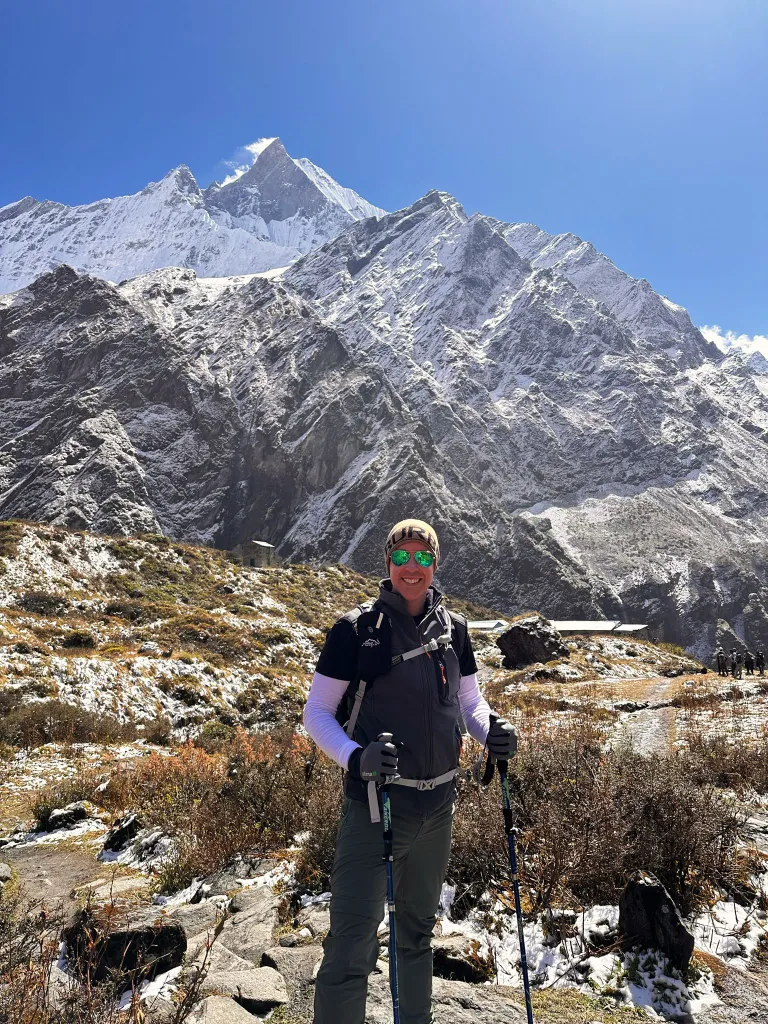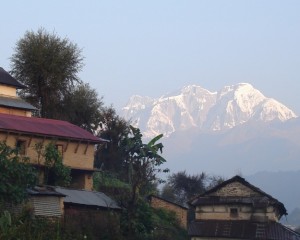Ultimate Guide to the Makalu Base Camp Trek: Everything You Need to Know
The Makalu Base Camp Trek is a hidden gem along the off-beaten-path adventure in the lap of the Makalu. The diverse landscape, remote settlements, and appealing scenery of the Himalayas make it one of the unexplored gems of the Himalayas, more than its more popular counterparts like the Everest or Annapurna treks.
Trekking through the untouched wilderness of Makalu, you’ll journey from lush subtropical forests to high-altitude terrains, crossing through traditional Rai and Sherpa villages while immersing yourself in their rich cultural heritage. Along the way, the Makalu Barun National Park unveils its exotic wildlife and vibrant flora, adding to the trek’s wilderness appeal. But the real reward? The cheering smiles of the Himalayas—with jaw-dropping views of Lhotse, Chamlang, Baruntse, and the Kangshung Face of Everest, alongside distant glimpses of Kanchenjunga, Cho Oyu, Chomo Lonzo, Nuptse, Changtse, and Mera Peak.
This journey is truly one of a kind, blending culture and nature into an unforgettable trekking experience. Many wonder if the Makalu Base Camp Trek is suitable for beginners—and the answer is yes! While the trail is moderate, proper preparation makes it accessible to trekkers of all experience levels.
So buckle up as we dive into all the details to help you plan your next unforgettable adventure to Makalu Base Camp!
Overview of Makalu Base Camp Trek
The Makalu Base Camp Trek is a challenging adventure in the heart of the Makalu Barun National Park, one of the least explored yet most breathtaking trekking regions of Nepal. The trail follows you to the base camp of Mt. Makalu (8,485m), the world’s fifth-highest mountain, with the unparalleled experience of raw wilderness, towering peaks, and unique cultural encounters.
The trek begins in the sub-tropical lowlands, where you pass from Num to Seduwa alongside the Arun River, crossing the terraced field and lush forest of Tashigoan, Khongma Danda, and Dobate. At the same time, you have to cross the Shipton La and Keke La Pass with the yak pastures, reaching the Maklau Base Camp through the steep ascent and descent in the rugged region.
Crossing the flapping chorten, spinning prayer wheel, and small monasteries scattered throughout the region will further immerse you in the beauty of their preserved culture and customs.
Despite the physical challenge, the region's natural and cultural aura will attract trekkers from all over the world.
- Trek through Makalu Barun National Park, home to rare species like the red panda, snow leopard, Himalayan tahr, and colorful pheasants.
- Pass by ancient Rai and Sherpa settlements, adorned with prayer flags, mani walls, and chortens, while experiencing the warm hospitality of the local communities.
- Conquer challenging uphill climbs and steep descents that keep your adrenaline high and test your endurance.
- Walk along the remote trails of the Makalu region, surrounded by lush forests, roaring rivers, and breathtaking alpine landscapes.
- Immerse yourself in a world of vibrant rhododendron forests, high-altitude meadows, and dramatic mountain vistas, with the majestic Makalu, Everest, and Kanchenjunga dominating the skyline.
\
How Difficult is the Makalu Base Camp Trek?
The Makalu Base Camp Trek is challenging because of its remote location, rugged terrain, and high altitude. These factors influence the difficulty, so trekkers should understand them in detail.
High Altitude and Acclimatization Challenges
You begin your official trek from Tumlingtar, making your way to Makalu's base camp above 4000m. The journey is two to three weeks long, with 5–8 hours of walking in the higher altitude and remote terrain.
At this higher altitude, the physical demand on your body increases. The air level decreases at such an altitude, fueling physical fatigue.
Altitude sickness is quite a common condition that occurs with the initial symptoms of headache, vomiting, nausea, shortness of breath, and fatigue. If the symptoms appear, it is better to slow your pace, hydrate your body and take Diamox in case of emergency.
Acclimatization is the best way to prevent altitude sickness. Explore the region and give your body time to adapt to the altitude.
Steep & Challenging Terrain
The diverse terrain of the Maklau Base Camp involves a rugged landscape, uneven land surface with long ascents and sharp descents requiring strenuous climbs for several hours.
The walk through dense forests, rocky moraines, glaciers, and high mountain passes is a physical challenge. Further, the Khongma Danda to Dobate section, which includes crossing Shipton La Pass and Keke La Pass, is one of the most demanding segments. Good physical fitness is required to navigate these challenges.
Remote & Limited Facilities
Unlike those commercial trekking regions, Makalu falls under restricted trekking zones because of its ancient culture and alluring natural heritage. The remote and restricted Makalu region has fewer tea houses and basic accommodations, so you have to be ready for simple lodging and limited food options. The one thing you have to remember is that there are scarce medical facilities in the area, so you must carry essential first-aid kits and emergency supplies.
The unpredictable weather, strong winds, snowfall, and cold temperatures at higher elevations can add to the difficulty.
Who is This Trek Suitable For?
The Makalu Base Camp Trek is ideal for experienced trekkers or adventurous beginners who are prepared for physical challenges. To fully enjoy this remote and rewarding adventure, those attempting this trek should have good endurance, strength, and proper acclimatization strategies.
Despite the physical challenges and limited facilities, the Makalu Base Camp trek has attracted many trekkers from all over the world to immerse themselves in its beauty. So, to help you prepare for a safe and enjoyable trekking experience, we have gathered all the information you need to tackle the trek with confidence.
Physical Fitness
The trek involves long walking hours, 5–8 hours per day, in the rugged terrain. Physical fitness is a must. The best way to prepare is by building endurance, strength, and cardiovascular fitness through the following exercises:
Cardiovascular Training (For Stamina & Endurance)
- Going on hikes and treks with a weighted backpack on steep trails or stairs.
- Running, jogging, and cycling at least 3–4 times a week.
- Jump rope, swim, or do HIIT workouts to boost cardiovascular endurance.
Strength Training (For Stability & Power)
- Leg workouts: Squats, lunges, and step-ups to strengthen quadriceps and calves for steep ascents and descents.
- Core training: Planks, sit-ups, and leg raises.
- Upper body workouts: Push-ups, chin-ups, and shoulder presses.
Flexibility & Mobility (To Prevent Injuries)
- Stretching, yoga, and mobility drills to keep muscles flexible and reduce the risk of injuries.
Mental Preparation
Mental endurance is non-negotiable for a long and remote trek like Makalu Base Camp. Challenges like unpredictable weather, physical exhaustion, and limited facilities can test your patience and determination.
Build mental resilience and stay positive and adaptable; the trek will have challenging moments. Familiarize yourself with the trek and mentally prepare for altitude, weather changes, and physical exertion.
Gear
- Clothing: Base layer (top and bottom), mid layer (fleece or down jacket), Outer layer (waterproof jacket and pants), Insulated jacket, Gloves (warm and lightweight), Hat and neck gaiter, Socks (thermal and moisture-wicking), Gaiters, Sunglasses.
- Climbing Gear: Ice axe, Crampons, Climbing boots (technical), Helmet, Harness, Carabiners, Ropes, Slings and webbing, Ice screws, Snow stakes, Repair kit (for gear), Avalanche beacon (if needed).
- Camping Gear: Tent (4-season), Sleeping bag (cold weather), Sleeping pad, Stove and fuel, Cooking pots and utensils, Water bottles/hydration system, Food and snacks, Waterproof stuff sacks.
- Personal Items: Passport and permits, Trekking poles, Headlamp, Camera and batteries, Personal hygiene items, First aid kit, Trekking shoes, Maps, and compass.
Permits for Makalu Base Camp Trek
To trek to Makalu Base Camp, you will need the following permits:
1. Makalu Barun National Park Permit
- Cost:
- Foreigners: NPR 3,000 (~USD 30)
- SAARC Nationals: NPR 1,500 (~USD 15)
- Nepali Citizens: NPR 100 (~USD 1)
- Where to Obtain: Kathmandu (Nepal Tourism Board) or at the entry point in Seduwa
2. Makalu Rural Municipality Permit
- Cost: NPR 2,000 (~USD 20) per person
- Where to Obtain: Issued at the entry point in the Makalu region
3. Restricted Area Permit (If Applicable)
- Cost:
- USD 20 per week per person for the first 4 weeks
- USD 25 per week per person after 4 weeks
- Required If Trekking to: Restricted villages such as Chepuwa, Hatiya, Kimathangka, and Pawakhola
Required Documents for Permits
To obtain these permits, you will need:
- A valid passport (at least six months of validity)
- Two passport-size photos
- Nepal entry visa stamp
- Travel insurance details (some permit offices may ask for proof)
- Permit fees in cash (preferably in Nepalese rupees)
These permits can be obtained in Kathmandu (Nepal Tourism Board), Tumlingtar, or at the Makalu Barun National Park entry checkpoint in Seduwa. If you're trekking with a guide or company, they usually arrange the permits for you.
Travel Insurance
Travel insurance is essential for the Makalu Base Camp Trek because it is a high-altitude and remote trek with limited medical facilities. Your insurance should cover emergency medical expenses, helicopter rescue, and trip cancellations. Since the trek reaches 5,000m (16,404ft), make sure your policy includes high-altitude coverage.
In case of accidents or altitude sickness, evacuation by helicopter can cost $5,000–$10,000, so having coverage for this is important. Delays or cancellations due to bad weather are also common, so insurance that covers flight delays and lost baggage can be helpful. Always check the details of your policy before purchasing to ensure it meets your trekking needs.
To wrap up, Makalu Base Camp Trek offers a fantastic adventure with stunning views, remote landscapes, and the chance to experience local cultures. The trek takes you through challenging terrain and high altitudes, rewarding you with views of impressive peaks like Makalu, Everest, and Lhotse. It’s perfect for those looking for a unique and adventurous trek in Nepal.
Ready for the challenge? Contact Nepal Vision Trek today to start planning your unforgettable journey!
FAQS






